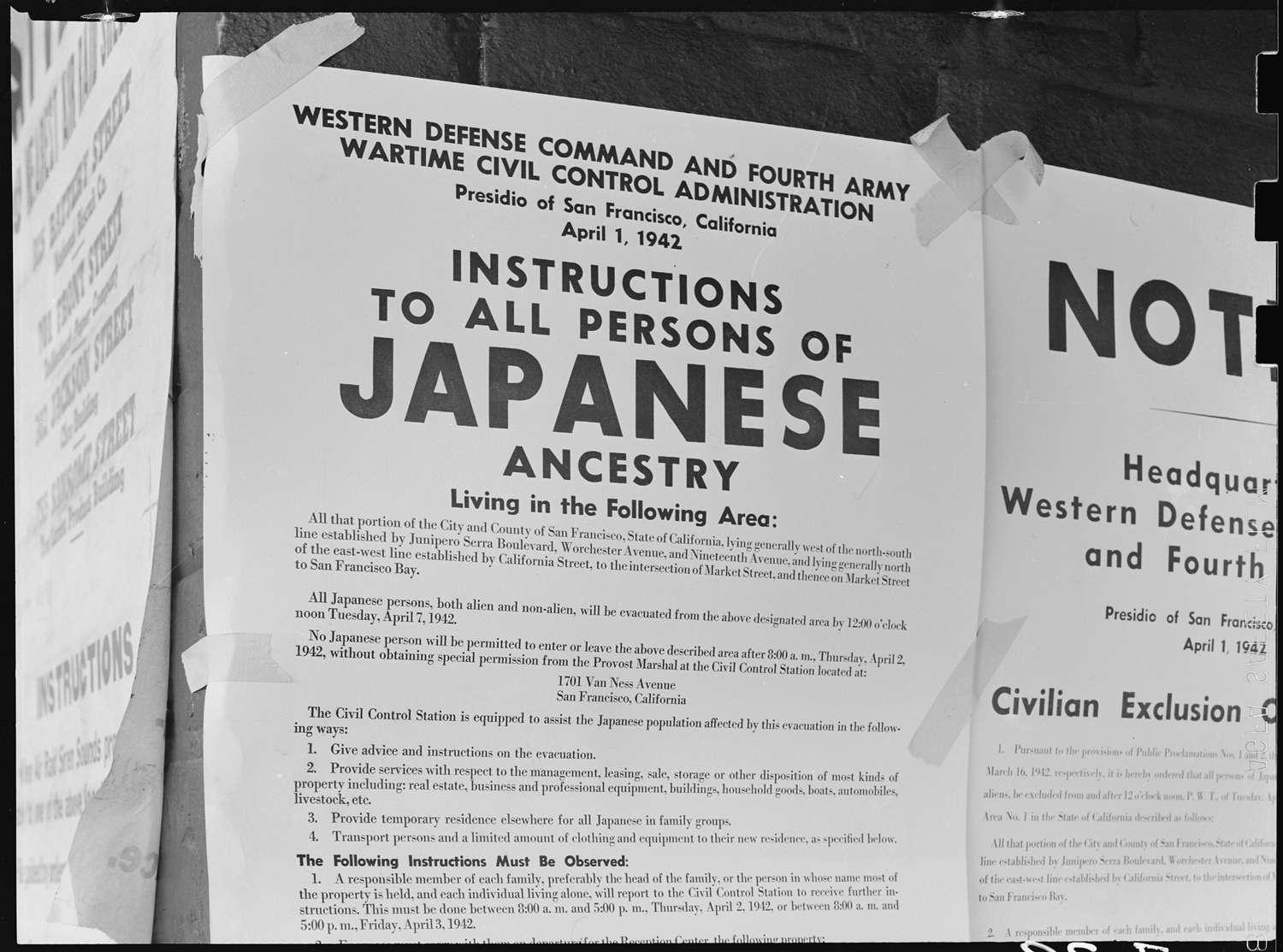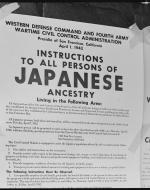Created by Stephen Jiang on Wed, 11/17/2021 - 23:38
Description:
Here is an official pamphlet given out to the public detailing the relocation of Japanese Americans. The location marked on this pamphlet is San Francisco which is the place marked out on the map. An interesting aspect of this pamphlet are the font of the words. The largest word on it is “JAPANESE”. Its purpose is twofold: to call out the importance of the subject which in this case would be the Japanese and to humiliate to subject to the General Public. Beside the words Japanese are the dates and location, a time and a place. The message conveyed is extremely straight forward as all steps are listed with clinical precision. The photo is framed so that there is one pamphlet that is in focus while around it there are other pamphlets faded into the background. While these pamphlets on the side aren’t in plane view its obvious that they serve the same purpose as the center one. This photo paints a clear picture. These pamphlets of relocation were plastered everywhere. Every wall, streetlamp, and window.
These people were ostracized by the American population and didn’t have the choice between staying at home and being put in an Internment Camp. American history has neglected this pivotal moment of the nation regressing into race discrimination. It’s easy to see that whenever there is a powerful majority of any sort there is a oppressed minority even when it comes to as Dave Chapelle would call it the “minority” Olympics. The Japanese Internment Camps have been largely overshadowed by other racial and ethnic issues such as the Trial of Tears of the Civil Rights Movement.
Sources:
Exclusion order directing removal of persons of Japanese ancestry. DocsTeach. (1942, April 11). Retrieved November 18, 2021, from https://www.docsteach.org/documents/document/exclusion-order.


